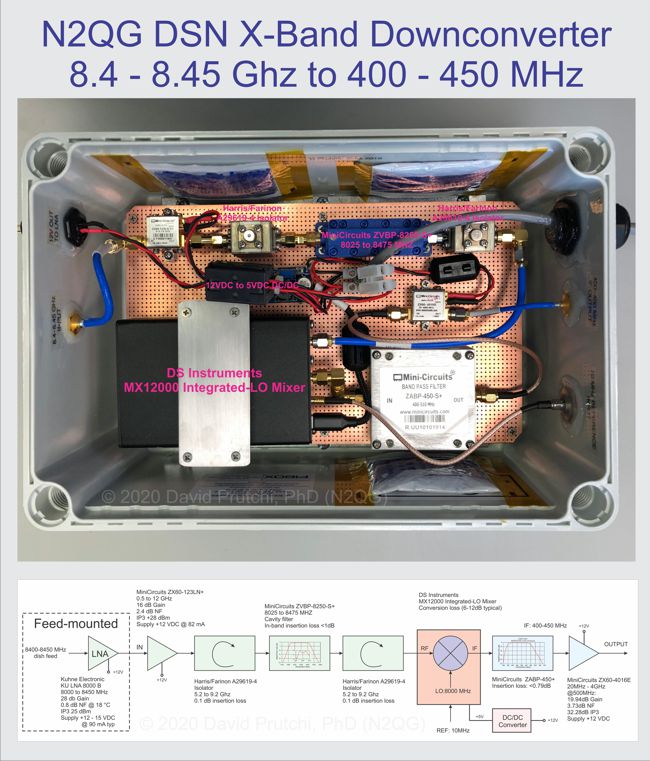
Mars Reconnaissance Orbiter (MRO) Received

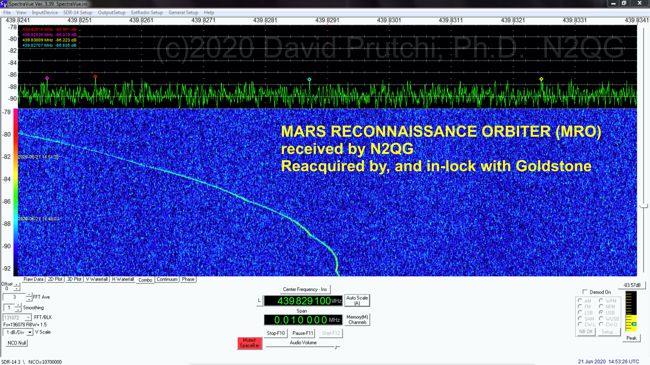
DSN X-Band Feed Tweak
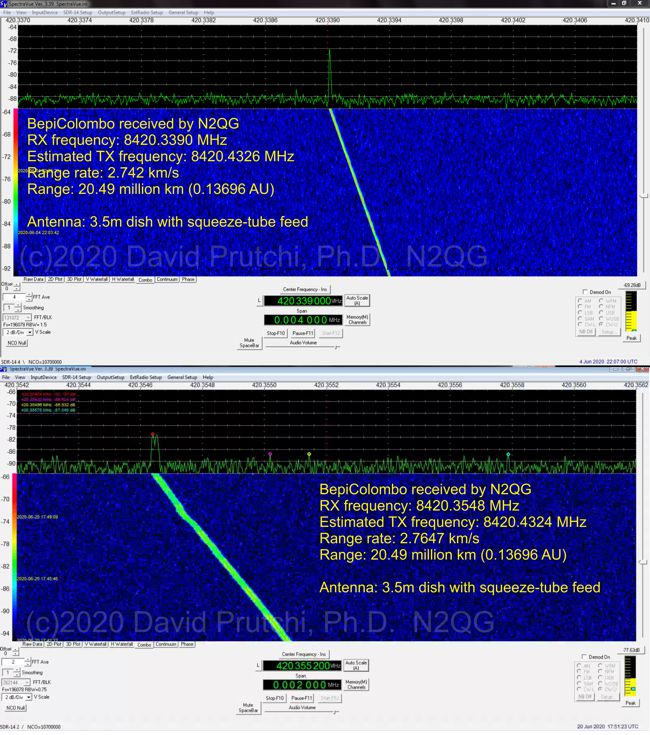
Today I tweaked the position of the feed and the VE4MA ring on the 3.5m dish. Signals improved quite a bit, with STEREO A at 9dB above noise, and BepiColombo at 15dB above noise. However, there is still quite a bit of room for improvement. I had to take down my measurement setup when the “severe thunderstorm” alert came in. Will try again tomorrow.
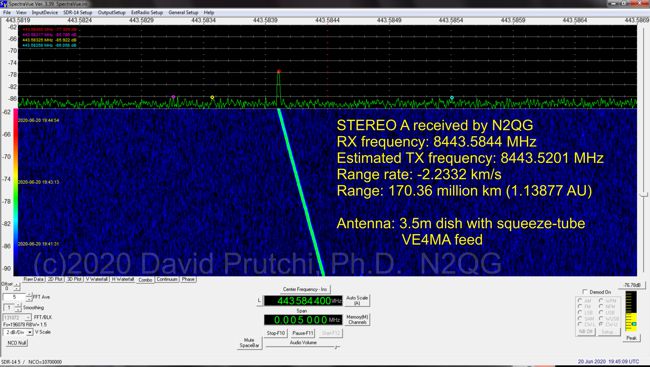
N2QG DSN X-Band Downconverter
CLICK HERE for high-resolution image.
Lately I’ve been asked about the downconverter that I built to receive X-band DSN signals. Because of time limitations, I took some shortcuts, namely using commercial connectorized modules and a high-stability signal generator with integrated mixer (DS Instruments MX12000 Integrated-LO Mixer) instead of designing the circuit from scratch. The cost of the unit is thus relatively high, but it was either that or not being able to receive X-band spacecraft at all in the foreseeable future.
We tested the downconverter (without LNA) at MUD2019, and measured a 4.58 dB noise figure and a downconversion gain of 24.4 dB.
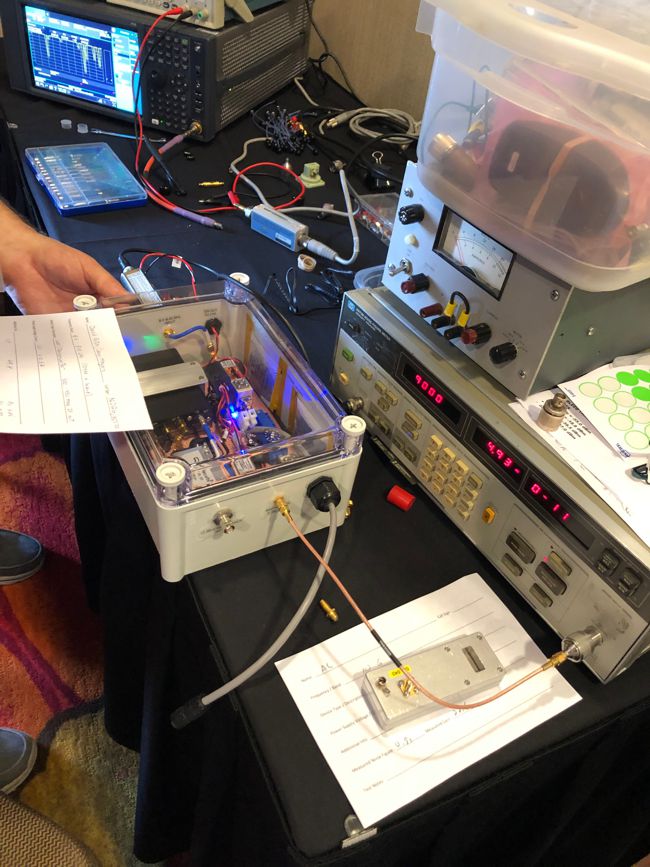
VE4MA Feed Mounted on 3.5m Dish and First-Light with RX of Mars Express
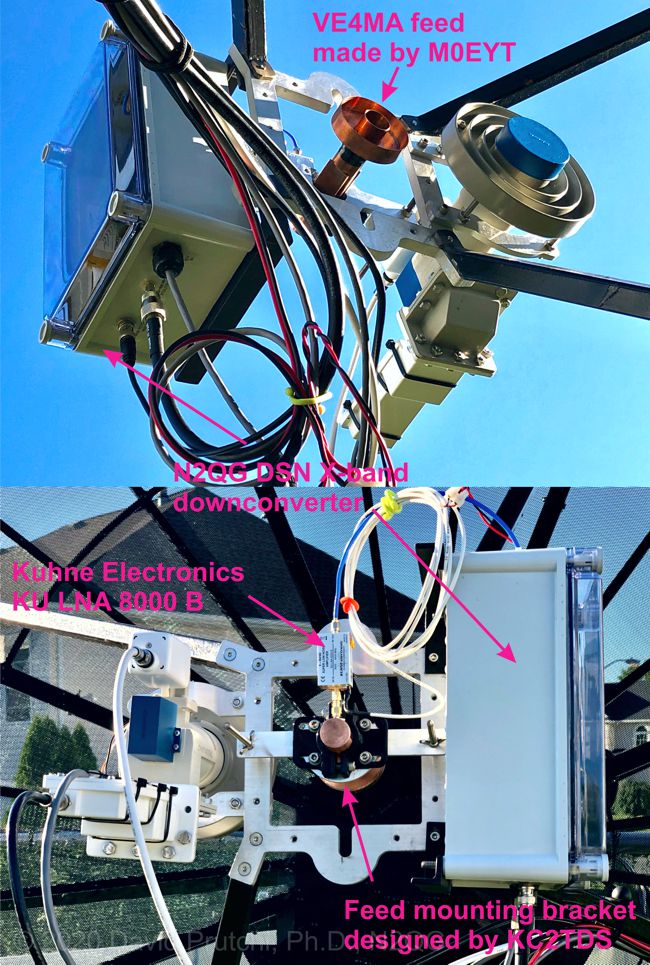
Yesterday I mounted the VE4MA with squeezed-tube depolarizer made by M0EYT (uhf-satcom) on the 3.5m dish using a bracket designed and fabricated by KC2TDS. The tube holder is 3D-printed nylon, while the bracket itself is aluminum cut with water jet.
It got late by the time I finished mounting the feed, so I didn’t have time to optimize the position of the feed and super Kumar ring relative to the focal point. Nevertheless, measured 11dB of Sun noise vs. cold sky.
This morning, before Mars would set, I was able to receive the Mars Express spacecraft. I could see on DSN Now that it was locked to Goldstone.
Fading in the signal shown below was because I still have to tweak PstRotor and the rotator controller (Green Heron) driving the BIG-RAS Az/El to deal with the very narrow beamwidth (0.69 degrees) produced by the 3.5m dish at X-band.
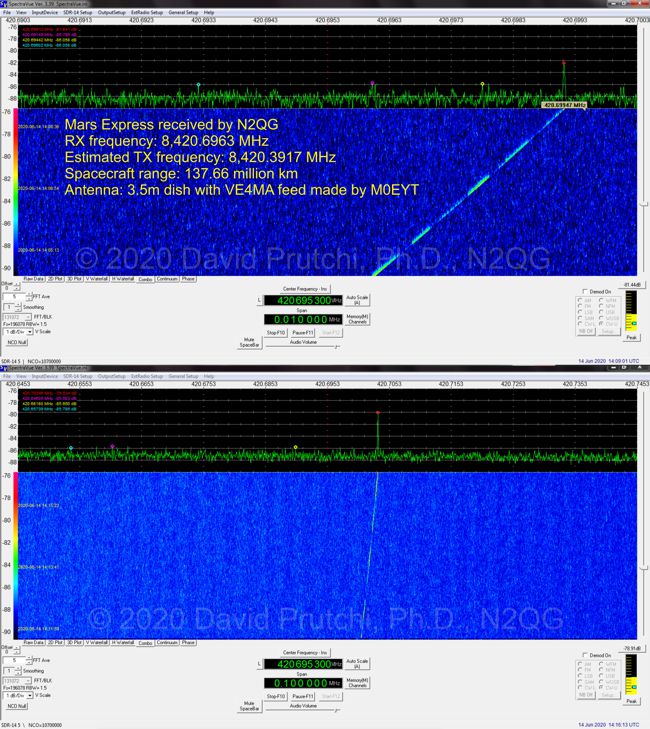
X-Band DSN Catch of the Day: Strong Signals from BepiColombo and STEREO-A

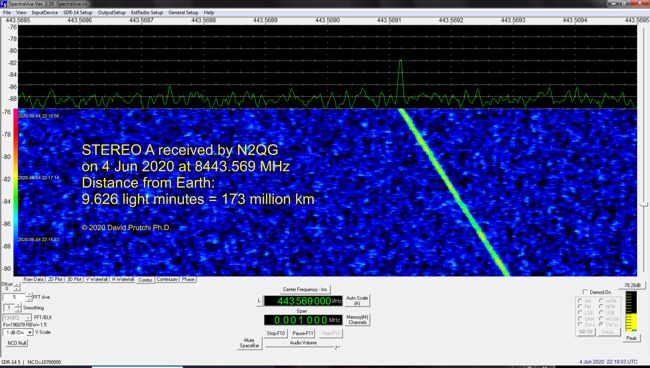
My Current X-Band DSN Setup

Probe Location for Squeezed-Tube X-Band DSN Feed
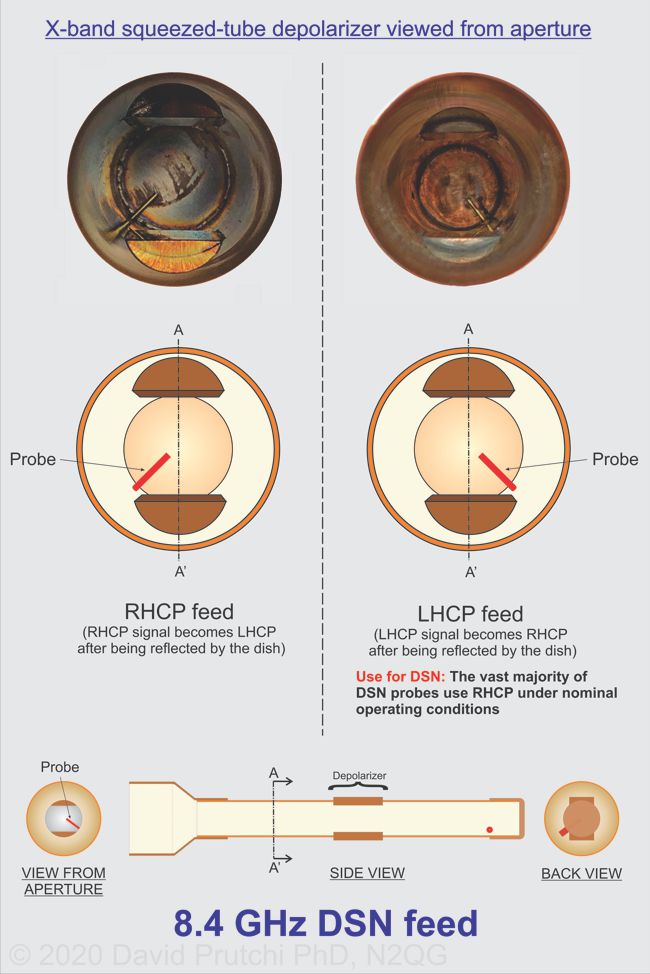
Feeds with squeezed-tube depolarizers are popular among amateur DSN enthusiasts because of their straightforward, no-tune construction. Luis Cupido CT1DMK published a design that is often followed, and has been used successfully by Paul Marsh M0EYT, Micha? Zawada SQ5KTM and other hams interested in DSN.
Signals from planetary probes are weak, so as many variables as possible need to be eliminated when first setting up and debugging an X-band system. One of them is the polarization of the antenna. I found myself in that situation, and after some experimentation plus helpful answers from hams on the Amateur-DSN groups.io board, I’m now certain that I have the probe correctly oriented for DSN DXing.
As shown in the figure, an LHCP feed is needed to receive the RHCP signals transmitted by the vast majority of DSN spacecraft (when operating nominally). This is because when the feed is mounted on a parabolic antenna, the feed’s LHCP signal becomes RHCP after being reflected by the dish. The exception to this is for Cassegrain or Gregorian dishes, where a a secondary reflector is used to direct the energy into the parabolic reflector from a feed antenna located away from the primary focal point. In this case, the RHCP signal becomes LHCP at the secondary reflector, and then back to RHCP again when reflected by the dish.
STEREO-A Received on X-Band from a Distance of 173.8 Million km
This weekend’s detection: STEREO-A received on X-band using 1.2m offset dish:
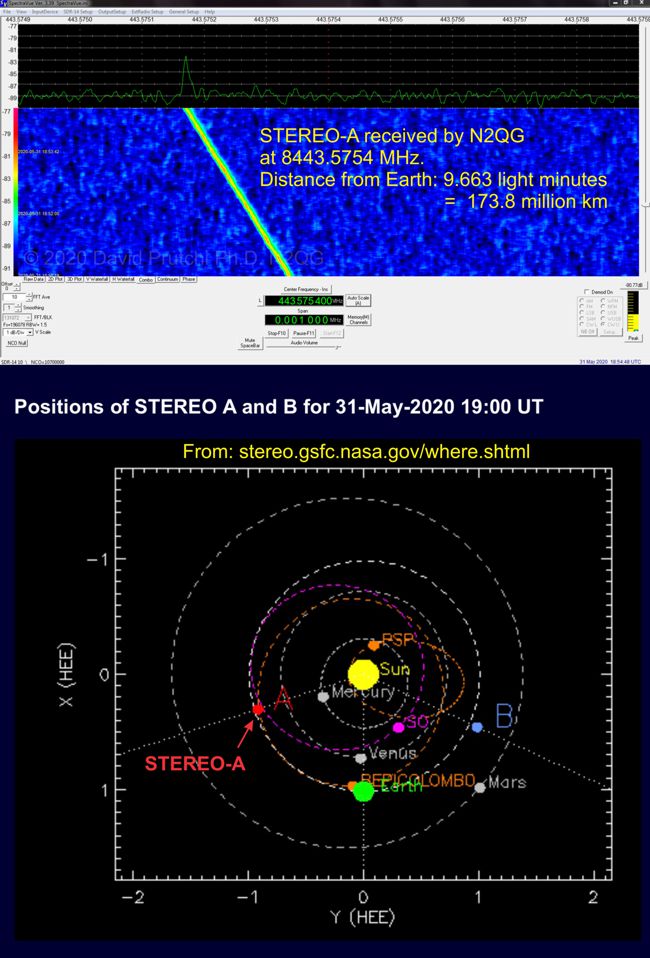
My First True-DSN X-Band DX: Bepi-Colombo at 15.2 Million km from Earth
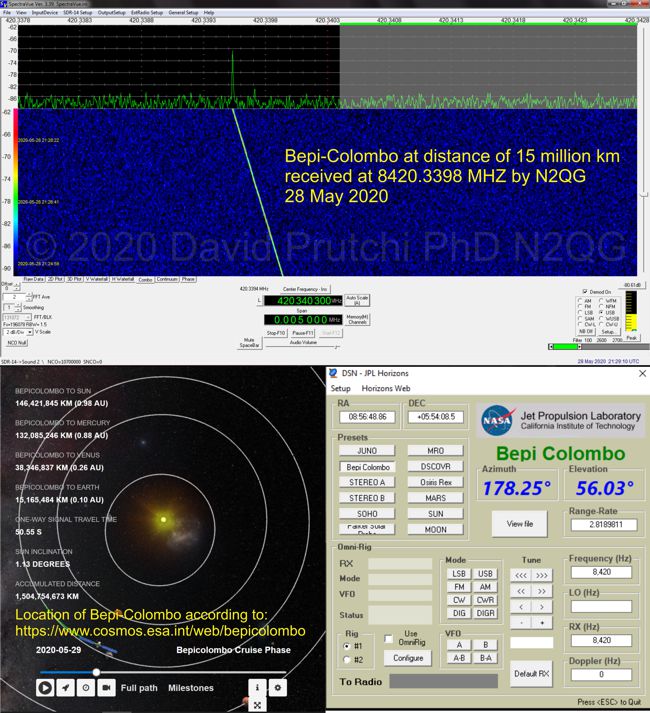
Today I was able to receive my first true-DSN X-band DX from Bepi-Colombo at a distance of 15.2 million km (around 9.5 million miles) away from Earth!
The squeezed-tube feed was made by Jason Meyers KC2TDS based on a design by Micha? Zawada SQ5KTM :
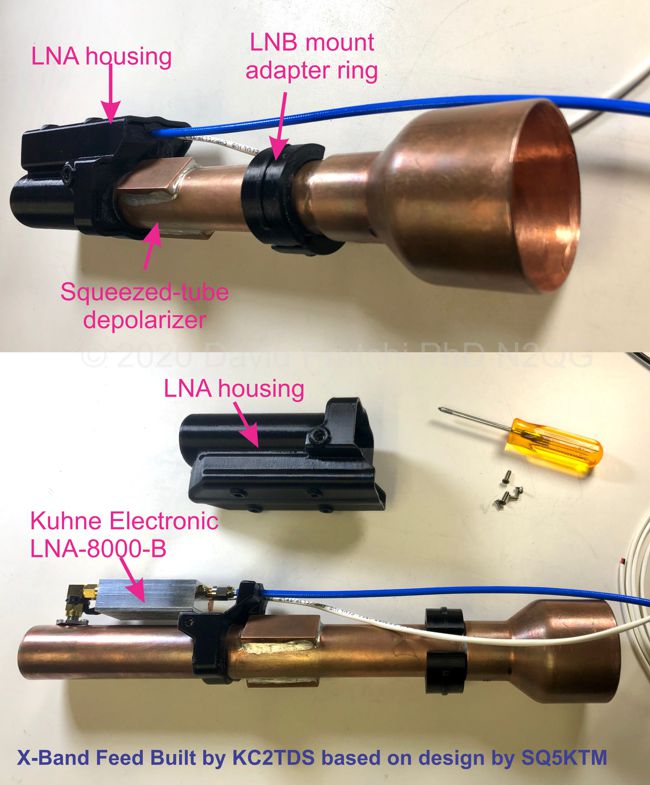
IMPORTANT UPDATE 1 June 2020: Please see https://www.prutchi.com/2020/06/01/probe-location-for-squeezed-tube-x-band-dsn-feed/ for the correct probe orientation!
The signal was received with the feed mounted on a 1.2m f/d=0.6 offset dish steered by a Yaesu G-5500 az/el rotator:
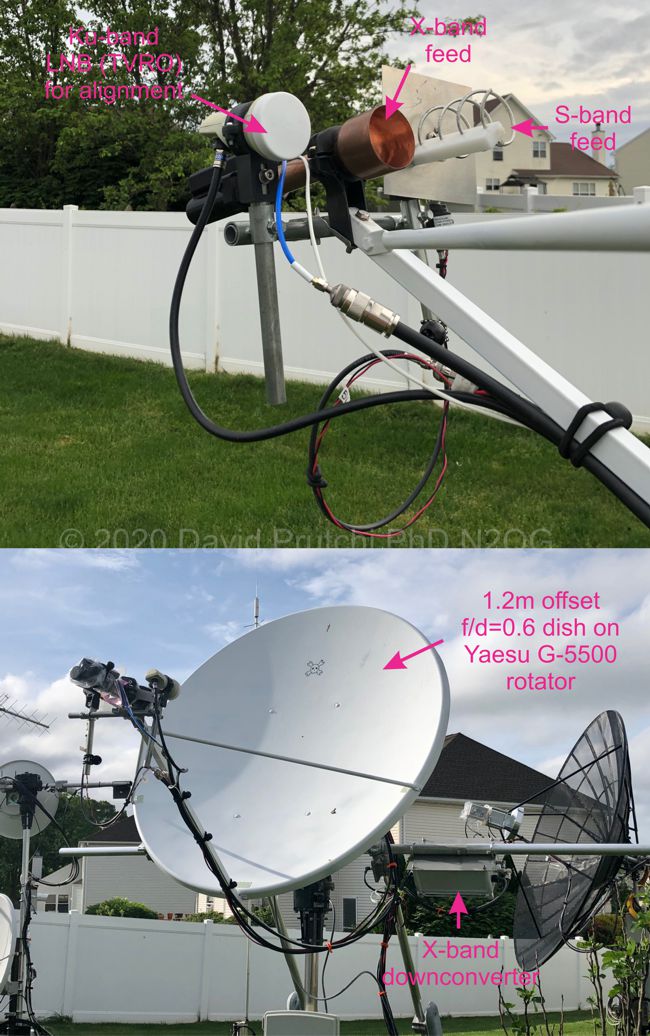
There is a Kuhne LNA-8000B low-noise amplifier connected directly to the probe, and the amplified signal is sent to the downconverter (LO=8GHz) mounted on the boom.
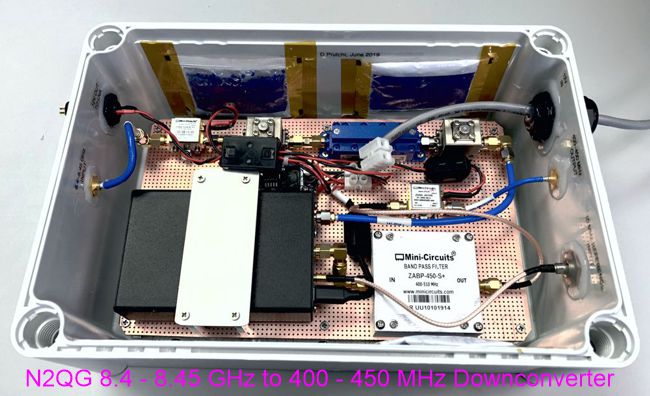
Downconverted signals (400 – 450 MHz) are received using an AOR AR-5000. The radio’s IF is sampled by a SDR-14 and displayed with SpectraVue.
Tracking of the probe is with PstRotator’s new DSN feature which downloads ephemeris data straight from NASA JPL’s Horizons:


